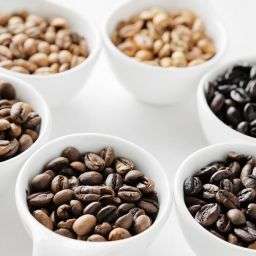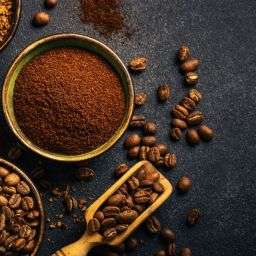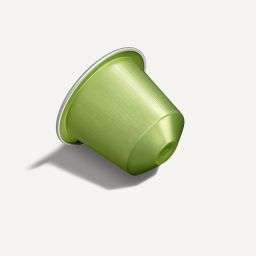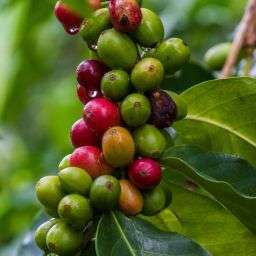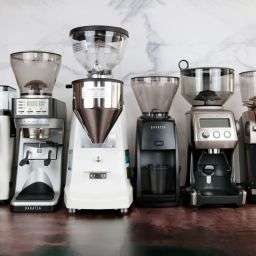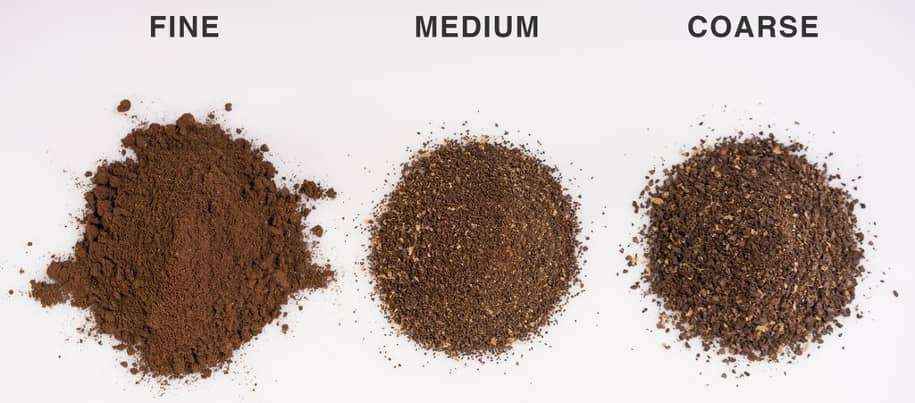
The grind size of your coffee beans is pivotal to unlocking the perfect cup of coffee, acting as a key determinant in the brewing process. Grind size affects not only the flavor and aroma but also the body and finish of the coffee you brew. At its core, coffee grinding breaks down coffee beans into smaller particles to increase the surface area that comes into contact with water. The grind size ranges widely, from coarse, resembling sea salt, to fine, akin to powdered sugar.
Coarse grinds are typically used in brewing methods where water and coffee are in contact for longer periods, such as French Press or cold brew, allowing for a slower extraction rate. This method is less likely to over-extract, preventing bitterness but potentially leading to under-extraction if not managed properly, resulting in a weak and sour flavor.
Fine grinds, on the other hand, are ideal for espresso or Aeropress, where the brewing time is short and pressure is used to extract flavors quickly. Fine grind size allows for a quick and intense extraction, capturing the coffee’s full range of flavors and aromas. However, it’s also more susceptible to over-extraction, which can lead to a bitter and harsh taste.
Key Takeaways
- Grind Size’s Role in Brewing: The size of your coffee grind significantly impacts the brewing technique’s effectiveness, influencing extraction rate and, consequently, the coffee’s overall flavor profile.
- Impact on Flavor: Coarse and fine grinds each play distinct roles in flavor extraction. Coarse grinds are less likely to over-extract, suiting longer brewing methods, whereas fine grinds, suitable for quicker brews, risk over-extraction but can also offer a rich and full-bodied taste.
- Brewing Method Consideration: Choosing the correct grind size is essential and highly dependent on the brewing method employed. Each method, from espresso to French Press, has its optimal grind size for ideal flavor extraction.
- Achieving the Perfect Grind: To optimize your coffee experience, experiment with grind sizes and brewing times. Adjusting these variables will help you refine the balance between too coarse and too fine, leading to a more delicious cup of coffee.
Extraction and Its Importance
In the world of coffee brewing, extraction is the process of pulling the flavors and aromas from the coffee grounds into the water. This phase is critical because it determines the strength and quality of your coffee. The goal is to achieve a balance where the desirable compounds are extracted, leaving behind the less desirable ones. There are two common pitfalls in this process: under-extraction and over-extraction.
Under-extraction occurs when not enough flavor has been pulled from the coffee grounds, often due to using too coarse a grind or not brewing long enough. This results in a coffee that tastes weak, acidic, and can have a sour or salty flavor profile.
Over-extraction is the opposite problem, where too much flavor is pulled out of the coffee grounds, often due to using too fine a grind or brewing for too long. This leads to a bitter, harsh, and sometimes astringent cup of coffee, as more undesirable flavors are extracted after the optimal ones.
Choosing Your Grinding Method
The method you choose to grind your coffee beans plays a significant role in the consistency of the grind and, consequently, the taste of your coffee. The two primary types of coffee grinders are blade and burr grinders, each affecting the coffee’s final brew differently.
Blade grinders use a spinning blade to chop the coffee beans into smaller pieces. While inexpensive and widely available, they often produce an inconsistent grind, with a mix of coarse and fine particles. This inconsistency can lead to uneven extraction during brewing, with some coffee being over-extracted and some under-extracted, resulting in a less balanced flavor.
Burr grinders, on the other hand, crush beans between two abrasive surfaces (burrs), which are set a specific distance apart, determined by the grind size you choose. This method results in a much more consistent grind size than blade grinders. Burr grinders are preferred by coffee enthusiasts and professionals because they allow for precise adjustments to the grind size, leading to a more consistent extraction and a better-tasting cup of coffee.
Grind Size and Brewing Methods
Selecting the correct grind size is crucial for optimizing the flavor and aroma of your coffee. Each brewing method has its preferred grind size to facilitate the best extraction possible. Here’s a detailed guide to help you match grind size with brewing methods:
- French Press: This classic brewing method requires a coarse grind, similar in texture to sea salt. The larger particles ensure a slow extraction rate, preventing over-extraction and bitterness, while allowing the rich, full flavors to develop.
- AeroPress: The AeroPress is versatile, accommodating a wide range of grind sizes depending on the brew time. For longer brews (2-3 minutes), a medium grind resembling regular sand is ideal. For shorter brews (under 1 minute), a fine grind, akin to table salt, is recommended, facilitating a quick, rich extraction.
- Espresso: Espresso demands a fine grind, much like powdered sugar, to create the necessary resistance for the pressurized water to extract the coffee effectively. This grind size ensures a quick extraction, capturing the coffee’s intense flavors and aromas within seconds.
- Pour-over: For pour-over methods, a medium-fine grind is optimal, offering a texture between table salt and fine sand. This size allows for a balanced extraction, preventing the water from flowing through too quickly and ensuring the coffee has a full-bodied flavor.
Each grind size influences the coffee’s extraction rate and, by extension, its taste. Coarser grinds slow down extraction, suitable for longer brew times, while finer grinds speed it up, ideal for methods requiring short contact times.
Adjusting Your Brew
Perfecting your coffee involves more than just selecting the right grind size. Adjusting brew time, water temperature, and even the grind size itself can lead to significant improvements in your coffee’s flavor profile:
- Brew Time: Longer brew times increase extraction, enhancing flavors and body. If your coffee tastes weak or sour, consider extending the brew time. Conversely, shorten the brew time if your coffee is overly bitter.
- Water Temperature: Ideal brewing temperatures range from 195 to 205 degrees Fahrenheit. Cooler water can lead to under-extraction, while hotter water risks over-extraction. Adjust within this range based on your taste preference and the brewing method.
- Grind Size Adjustments: Even within a single brewing method, slight adjustments to the grind size can fine-tune the extraction. If the coffee is too bitter, coarsen the grind slightly; if it’s too weak, make it finer.
FAQ
How does grind size affect coffee flavor? Grind size directly impacts the extraction process during brewing. A fine grind increases the surface area exposed to water, leading to faster extraction and a stronger flavor. Conversely, a coarse grind slows down extraction, resulting in a lighter taste. Adjusting the grind size allows you to control the balance of flavors extracted from the coffee beans.
How do I choose the right grind size for my brewing method? Selecting the right grind size depends on your brewing method. Espresso machines work best with fine grinds, while French Press or cold brew methods require coarse grinds. Pour-over and AeroPress can accommodate a range of medium to fine grinds depending on the desired strength and brew time.
Can adjusting grind size help me make my coffee stronger or weaker? Yes, adjusting the grind size is a key way to control coffee strength. A finer grind will produce a stronger, more concentrated flavor due to increased extraction rates. If you prefer a weaker coffee, opting for a coarser grind will reduce the extraction rate, resulting in a milder beverage.
Final Thoughts
The grind size of coffee beans is a fundamental aspect of the brewing process, significantly affecting the flavor, strength, and quality of the final cup. Selecting the right grind size for your preferred brewing method is crucial in achieving the desired coffee experience. Experimentation with grind sizes and brewing parameters is encouraged to discover the perfect balance for your taste.
Whether you prefer a robust espresso or a light and airy French Press, understanding and manipulating grind size can elevate your coffee to new heights. Remember, the journey to the perfect cup of coffee is both an art and a science, with grind size playing a pivotal role in unlocking the full potential of your coffee beans.



